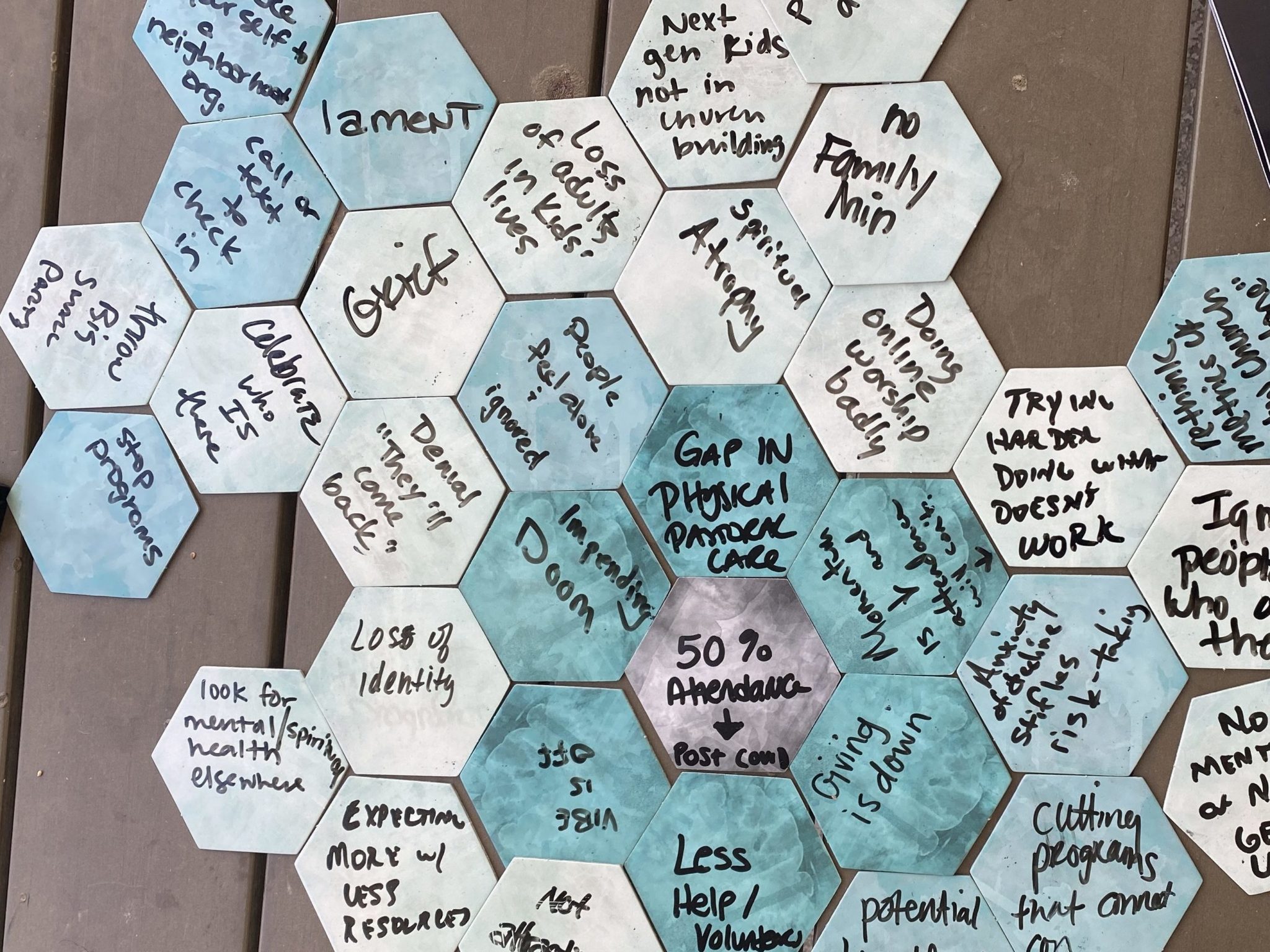
The problems we are the most passionate about are often the ones we are least able to see clearly. We can spend so much time in the minutia, in the nuance, of a large, complex problem, that we lose the thread of what we’re really trying to accomplish.
Instead of spending our time thinking about discipleship, we spend it arguing over graphics for the Lenten theme, or negotiating with volunteers on the exact rooms we’ll use for fellowship dinner. Instead of spending our time thinking about empowering youth in our community, we spend it looking at what the organization down the street is doing, or trying to maintain our budget. None of these are bad things to worry about, at Ministry Incubators, we’re believers in creating sustainable systems to maintain good ideas, and know that an up-to-date supporter database can be as important to your success (if not more) than a well-worded theological mission statement.
But it’s easy to lose sight of the forest because we’re evaluating the foliage density on trees.
Dr. Mandy Drury, at Indiana Wesleyan University, is a member of the Ministry Incubators team as well as a professor of youth ministry and the founder and leader of Discipleship by Design. This organization creates design-thinking-oriented games and activities to be used by churches and faith-based enterprises to reframe their messiest questions, and perceive their opportunities from a new angle.
A few months ago, the Ministry Incubators team got the opportunity to utilize the tools with a variety of technically hypothetical, but functionally very real, problems.
One game, Ripple Effect, challenges the participants to imagine the problem they face as a stone thrown in a pond, which creates rings of ripples. The core problem is written on a hexagonal tile that represents the stone, and then layers of problems that are caused by that problem surround the “stone” are written on the surrounding tiles. The problems caused by those secondary problems create another ring, and so on.
As we played this game together, the maps of tiles began to feel… overwhelming.
As a few members of our team sat around one of the maps, centered on the “stone” of a large building with a small congregation, the scale of problems, hypothetical to us but very real to so many, felt gut-wrenching. The center tile had a first wrung of items like “high maintenance costs” and “low morale,” and the second ring had things like “crumbling building” and “lack of volunteer engagement,” respectively, off the first ring.
The web of problems and consequences brought clarity to the problem I had never experienced before. The ability to look down at it all mapped out on a table gave the objective distance necessary to truly understand the problem. It was bleak, but it made sense. I could understand that disengaged volunteers and chipping paint weren’t problems in addition to the mismatch of space and congregation, but ripples of this one stone thrown in the pond.
Then, once our maps were done, Dr. Drury gave an unexpected additional direction: pick an outside ring tile, something specific and tertiary, and solve it.
All of a sudden, the board came alive. We grabbed a tile that said “unmaintained landscaping” and talked about a community garden. We grabbed the tile about maintenance problems and brainstormed around allowing vocational students, learning skills like plumping or HVAC, to get practice working at the church for a reduced cost, maybe even hosting night classes there. Trey Wince, our executive director, grabbed a tile that said “Funerals are the main gathering” and suggested,
“What if we threw the most extravagant, sacred, over-the-top funerals in the city?”
Within moments, we were talking about what it would look like for this church to hire event planners and chaplains to specialize in these services. The congregation could see it as their calling to be witnesses of the truth of our mortality in the reality of a loving God and eternal life. We started talking about potlucks and funerals as community events, where the more anonymous the person, the more overfull the sanctuary.
Dr. Drury told us, once we had a solution to the periphery problem, to see how we could reverse the tiles around it and see what solutions our one solution brought us. As we flipped back over tiles, we imagined this unlikely pocket of grace causing its own ripples. The funerals could bring in enough money to re-paint buildings, create places for God to move, and give a new purpose to a community that felt past its prime.
I was struck by all the possibilities that it is so easy to miss when deeply in a problem.
We can sometimes get so caught up in the minutia of our problems that we miss their interconnected nature. Because we miss how the problems are interconnected, we deprive ourselves of the hope that comes with the reality that their solutions might be as well.
Take some time this week, and think about how you could create the space to step back from the problems you face and find people to talk through them with. As you see minor issues in your context, don’t be afraid to act on them, even if it seems like small steps, because as interconnected these issues may be, their answers may be the same.
We are so grateful for the insights we gained from Ripple Effect. If you want the full experience of Dr. Drury’s incredible design, you can purchase Ripple Effect through the the Ministry Incubators website.




0 Comments